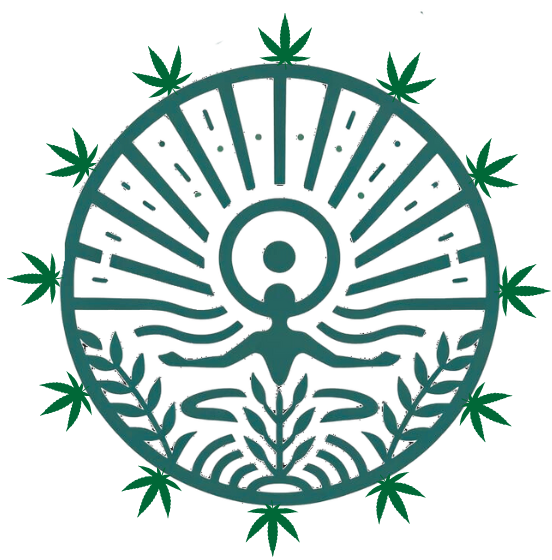Are you curious about the world of natural psychedelic herbs and their effects?
From the dreamy visions induced by Ayahuasca to the profound insights offered by Psilocybin mushrooms, each herb carries its own unique set of properties and uses.
In this article, we dive deep into the effects of 4 different natural psychedelic herbs and compare their benefits and effects.
Whether you’re a seasoned psychonaut or just beginning to explore the expansive realms these herbs can unlock, understanding their diverse impacts can enrich your knowledge and possibly guide your personal journey.
What are natural psychedelic herbs?
Natural psychedelic herbs offer a gateway to an altered state of consciousness.
These herbs contain potent compounds that can induce visual and auditory hallucinations, profound introspection, and heightened sensory perception.
Today, we will discuss 4 of the most popular natural hallucinogens: Peyote, Ayahuasca, Salvia divinorum, and Psilocybin mushrooms.
They have been used in spiritual and healing rituals by indigenous cultures for centuries. Their effects vary depending on the dosage, the individual’s mindset, and the environmental setting.

1) Ayahuasca: The vine of the soul
Ayahuasca is a brew made from the Banisteriopsis caapi vine and the leaves of the Psychotria viridis plant.
This herb holds a special place among natural psychedelic herbs.
Used traditionally by indigenous tribes of the Amazon for spiritual and healing purposes, Ayahuasca induces profound visions and introspection, often leading to personal revelations and emotional cleansing.
The active ingredient DMT (Dimethyltryptamine) triggers an intense psychedelic experience, while the vine itself acts as an MAO inhibitor, allowing DMT to be absorbed in the body.
The cultural context of Ayahuasca use is essential to consider.
Traditionally, it’s consumed under the guidance of a trained shaman who helps navigate the intense experiences it induces.
In recent years, Ayahuasca retreats have gained popularity, offering structured settings where individuals can safely explore this powerful plant medicine’s effects.
However, it’s not just about the visions – Ayahuasca is known to promote long-term positive changes in personality and perspective.
Therefore, many indigenous people still believe that it should be taken under the guidance of an experienced shaman.

2) Salvia divinorum: The seer’s sage
Stepping into the realm of Salvia divinorum, we encounter a plant revered by the Mazatec Indians of Mexico as a divine conduit for visions.
This psychedelic herb, often simply called Salvia, contains the potent psychoactive compound Salvinorin A.
Unlike other natural psychedelics, Salvinorin A interacts with the kappa opioid receptors in the brain.
This interaction leads to unique, intense experiences that are drastically different from those induced by classic psychedelics like LSD or psilocybin.
The effects of Salvia are typically short-lived, lasting from a few minutes to an hour.
Users report experiencing shifts in physical perception, vivid hallucinations, and sensations of traveling through time and space.
It’s not uncommon for individuals to feel as if they’re merging with objects or experiencing multiple realities at once.
Given its potent effects and rapid onset, it’s recommended to use Salvia in a safe, controlled environment under the supervision of someone familiar with its effects.

3) Psilocybin: The magic mushrooms
Psilocybin mushrooms, often colloquially referred to as “magic mushrooms”, are a group of fungi that contain the psychoactive compounds psilocybin and psilocin.
These natural psychedelics have been used by various cultures across the globe for spiritual and divinatory purposes.
Here’s how these shrooms work:
Upon ingestion, psilocybin is converted into psilocin in the body, which binds to serotonin receptors in the brain.
This produces a range of effects including visual hallucinations, enhanced emotions, and altered perception of time and space.
Some users even report mystical experiences that lead to lasting positive changes in life satisfaction, mood, and behavior.
A noteworthy example of their potential benefits can be seen in recent studies on psilocybin-assisted psychotherapy.
In fact, researchers use controlled doses of psilocybin alongside psychotherapy to treat conditions like depression and end-of-life anxiety.
The promising results from these studies point towards the untapped therapeutic potential of these ancient natural psychedelics.

4) Peyote: The desert’s gift
Moving further in our exploration, you might be intrigued to learn about Peyote – a small, spineless cactus native to the deserts of Mexico and the southwestern United States.
This plant has been central to the religious and cultural practices of the indigenous peoples of the region for thousands of years.
The primary psychoactive component in Peyote is mescaline.
This compound induces a range of effects, from colorful visual imagery to deep introspection and philosophical insight.
Many Peyote users also report a heightened sense of empathy and interconnectedness with the world around them.
- Peyote is often consumed in the form of tea or chewed to experience its psychedelic effects.
- The onset of effects is usually within an hour, peaking for 2-4 hours, and gradually diminishing over 8–12 hours.
However, it’s worth noting that Peyote is classified as a Schedule I controlled substance in the United States, meaning its use outside of specific religious contexts is illegal.
As with all psychedelics, it’s crucial to consider legalities and potential health risks before use.
Comparison of these 4 psychedelic herbs
As you can see, each of these 4 pychedelic herbs induce their effects by interacting with various neurotransmitter systems in the brain.
Here’s an overview of how some of these herbs function:
- Ayahuasca: This Amazonian brew contains DMT, which primarily interacts with the serotonin receptors in the brain to produce visions and deep introspective experiences.
- Psilocybin mushrooms: Also known as “magic mushrooms”, these contain psilocybin, which is converted into psilocin in the body. Psilocin also targets serotonin receptors, creating a range of effects, from mood elevation to visual hallucinations.
- Peyote: This cactus contains mescaline, a compound that binds to dopamine and noradrenaline receptors in addition to serotonin receptors, resulting in a broad spectrum of psychedelic effects.
- Salvia Divinorum: Unlike the above herbs, Salvia primarily affects kappa opioid receptors in the brain, leading to unique effects such as spatial and temporal dislocation.
Now, let’s consider the potential side effects of each of these psychedelic herbs:
- Ayahuasca: Common side effects include nausea, vomiting, and diarrhea. In rare cases, it can lead to serious health complications for individuals with certain mental health conditions or those taking specific medications.
- Psilocybin mushrooms: Users often report experiencing a “bad trip” characterized by paranoia, anxiety, and disturbing hallucinations. Physical side effects can include nausea and increased heart rate.
- Peyote: Side effects can range from mild—like nausea and increased heart rate—to severe, such as profound psychological distress and disorientation.
- Salvia Divinorum: Its use can lead to intense hallucinations that may be disturbing for some. Physically, it can cause dizziness, slurred speech, and lack of coordination.
Responsible use and respect for Psychedelics
As we delve deeper into the realm of natural psychedelics, it’s vital to remember the power and potential these herbs hold.
They are not merely recreational substances, but tools that have been used by our ancestors for spiritual growth and self-discovery.
Therefore, it’s crucial to approach them with respect.
It’s also important to remember that these substances are not for everyone.
They can induce intense experiences that may be challenging for some individuals, particularly those with a history of mental health issues.
Here’s how you can reduce harm and prioritize safety while using these herbs:
- Set and setting: Your mindset and the environment in which you’re consuming these substances can significantly influence your experience. Choose a safe, comfortable, and controlled environment.
- Guidance: Especially for first-time users, having an experienced guide or “sitter” present can help navigate any challenging moments during the experience.
- Health considerations: Prior to using these substances, consider any pre-existing mental or physical health conditions that could be exacerbated by their use.
- Dosage: Start with a low dose to understand how you react to the substance, and avoid mixing with other psychoactive substances.
Final thoughts on the power of natural psychedelics
The world of natural psychedelics is vast and varied.
These herbs, with their profound effects, open doors to unexplored corners of the mind and offer potential paths to personal growth and healing.
The information provided here is just a stepping stone – the beginning of a deeper understanding of these potent plants.
As research continues to evolve, we may find more applications for these herbs in therapy and personal development.
In the meantime, it is up to us to approach them with respect, curiosity, and an open mind.
After all, growth is about more than just learning. It’s about applying that knowledge in a thoughtful and responsible way.










